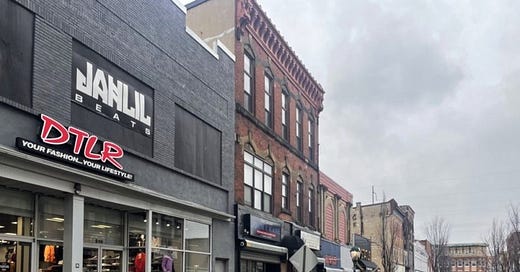Chester's bankruptcy one year later
Thanks to a tangled web of finances and persistent protests by a loud few, the city's bankruptcy case may be a long haul.
It’s been exactly one year since the city of Chester, Pennsylvania, filed for bankruptcy and while a lot has changed, overall progress has been slow. In fact, the only city bankruptcy case that had made less progress than Chester has after a year is San Bernardino, California—which spent a decade wading through its Chapter 9 bankruptcy case before it finally closed last year.
There are a few reasons for the slow plod in this Philadelphia-area city of 33,000, not the least of which are its messy finances. This week, I’ll look at the latest step toward cleaning them up and what may be in store for Chester’s Chapter 9 future.
Decoding Chester’s mysterious finances
A court ruling this week that gave the city access to its own revenues offers a glimpse into the complicated knot of financial data that the city receiver’s team is tasked with untangling. The ruling dealt with the lone creditor objecting to Chester’s bankruptcy: Preston Hollow Community Capital, which sold the city in bonds in 2017.
To recap from one of my earlier pieces:
Even after defaulting, Chester was able to borrow money
By the beginning of 2017, Chester had accumulated approximately $28 million in unpaid pension bills and related fees and had defaulted on its 2016 Tax Revenue Anticipation Note. (It did eventually make that payment) …the 408-page offering statement [for the 2017 bonds] is still chock full of warnings about Chester’s high risk profile. “The City has significant liquidity risk, which has resulted in failure by the City to make certain required MMO payments, deferring payment of bills to vendors,” the statement said. What’s more, it notes that in the event of a Chapter 9 filing, the holders of the 2017 bonds would be considered unsecured creditors.
When the city sold the bonds to Preston Hollow, it also created an “Indenture Trustee,” who established a revenue fund from which debt payments would be made. Pre-existing debt payments to Delaware County for the city’s share of the MLS soccer stadium debt became the trustee’s responsibility as well.
Revenue the city received from Harrah’s Casino and the trash incinerator (two of Chester’s largest income sources) went straight to that trustee fund. Once the fund had enough money to make that year’s debt payments, the city was supposed to get the remainder.
But by the time the city filed for bankruptcy in 2022, the trustee fund had accumulated $4.5 million even though only $1.4 was needed for the next debt service payment, according to the court opinion. In its petition for the funds, Chester said not only was it due the remainder, but that Preston Hollow didn’t have claim to any city revenue deposited in the trustee’s fund after the city filed for bankruptcy (an amount that, at this point, is unknown). The court agreed.
Bottom line, this is a slow slog. City receiver Michael Doweary’s main job at the moment is to get a handle on Chester’s finances after years of mismanagement by local officials. But just getting access to roughly $3 million in city revenue that was—for no valid reason—being kept in a lockbox account took months of work and a court of law to settle.
Meanwhile, Doweary’s bid to get more direct control over city management (and more effectively do his job) has languished. The case was argued before the state Supreme Court in May and nearly six months later, his team is still waiting on an opinion.
A decade-long bankruptcy?!
I’m not saying Chester will languish in bankruptcy court as long as San Bernardino did. But it’s worth comparing because cities like Detroit; Central Falls, Rhode Island; Stockton and Vallejo, California were at least working on (if not almost finished with) their restructuring plans one year into their proceedings.
Keep reading with a 7-day free trial
Subscribe to Long Story Short to keep reading this post and get 7 days of free access to the full post archives.





